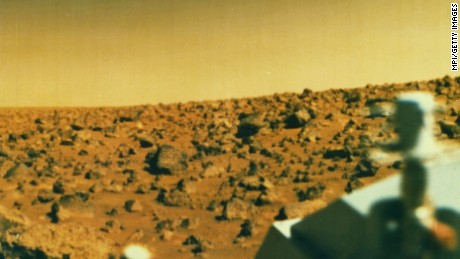"Three ... two ... ... zero ... Lift off, of the Atlas V -- launching the first interplanetary mission from the West Coast and NASA's Insight, the first outer space robotic explorer to study the interior of Mars," a NASA announcer declared amid the rumble of takeoff at 7:05 a.m. ET, via NASA TV.
The Atlas V 401 rocket also carried two suitcase-size spacecraft, designed to orbit Mars, as it blasted into the dark and cloudy sky, which turned bright gold for seconds as the rocket ascended in a plume of smoke. NASA's previous interplanetary missions launched from Kennedy Space Center in Florida.
After a six-month journey, if it all goes as planned, InSight -- whose name is short for Interior Exploration using Seismic Investigations, Geodesy and Heat Transport -- will touch down just north of the Martian equator on November 26,joining five other NASA spacecraft operating on and aboveMars.
The explorer doesn't have wheels, so it can't roll around gathering up dirt to study. But it does have a 7.8-foot-long (2.4-meter) robotic arm. The arm will place a seismometer on the ground to detect "marsquakes" (think earthquakes, but on Mars, of course).
InSight also will burrow 10 to 16 feet into the crust of Mars, going 15 times deeper than any previous Martian mission, according to NASA.
"We have mapped the surface of the entire planet in terms of visible features, topography, gravity and magnetic fields," he said. "We have studied the atmosphere, both globally and at the surface. We have roved around the surface at four different places, studying the geology and piecing together the history of the surface.
"But until now, the vast regions of the planet deeper than a few miles, or so, (have) been almost completely unknown to us," Banerdt said. "InSight will change that with a single stroke."
Bagikan Berita Ini


















0 Response to "NASA launches mission to Mars"
Post a Comment